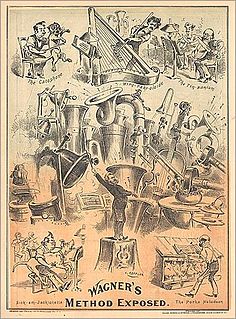
This article is about music-related events in 1877.

Sir Henry Walford Davies was an English composer, organist, and educator who held the title Master of the King's Music from 1934 until 1941. He served with the Royal Air Force during the First World War, during which he composed the Royal Air Force March Past, and was music adviser to the British Broadcasting Corporation, for whom he gave commended talks on music between 1924 and 1941.

Sir Charles Villiers Stanford was an Anglo-Irish composer, music teacher, and conductor of the late Romantic era. Born to a well-off and highly musical family in Dublin, Stanford was educated at the University of Cambridge before studying music in Leipzig and Berlin. He was instrumental in raising the status of the Cambridge University Musical Society, attracting international stars to perform with it.
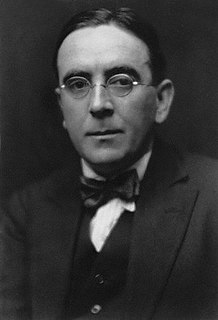
John Nicholson Ireland was an English composer and teacher of music. The majority of his output consists of piano miniatures and of songs with piano. His best-known works include the short instrumental or orchestral work "The Holy Boy", a setting of the poem "Sea-Fever" by John Masefield, a formerly much-played Piano Concerto, the hymn tune Love Unknown and the choral motet "Greater Love Hath No Man".
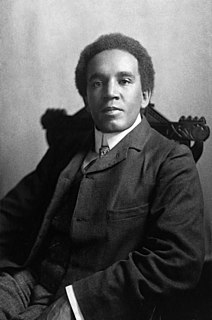
Samuel Coleridge-Taylor was an English composer and conductor.

Giuseppe Martucci was an Italian composer, conductor, pianist and teacher. Sometimes called "the Italian Brahms", Martucci was notable among Italian composers of the era in that he dedicated his entire career to absolute music, and wrote no operas. As a composer and teacher he was influential in reviving Italian interest in non-operatic music. As a conductor he helped to introduce Wagner's operas to Italy and also gave important early concerts of English music there.

Edwin York Bowen was an English composer and pianist. Bowen's musical career spanned more than fifty years during which time he wrote over 160 works. As well as being a pianist and composer, Bowen was a talented conductor, organist, violist and horn player. Despite achieving considerable success during his lifetime, many of the composer's works remained unpublished and unperformed until after his death in 1961. Bowen's compositional style is widely considered as ‘Romantic’ and his works are often characterized by their rich harmonic language.
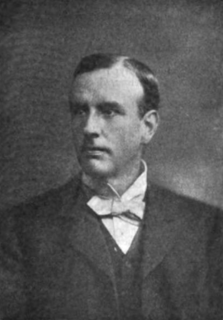
Alan Gray was an English organist and composer.

Robert Hausmann was a notable 19th-century German cellist who premiered important works by Johannes Brahms and Max Bruch. He was the cellist for the Joachim Quartet and taught at the Berlin Königliche Hochschule für Müsik.
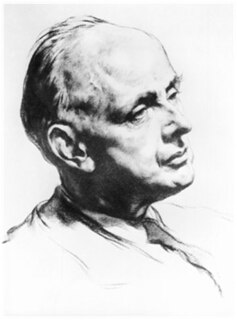
Edgar Kendall Taylor CBE, FRCM, Hon FRAM was a British pianist, who had an international career as a solo concert pianist. In the United Kingdom, he was well known for his concerts, which were broadcast on the BBC. He was also known for his recitals and broadcasts to the troops during World War II through the Entertainments National Service Association. He also had a career as a teacher and pedagogue.
Charles Villiers Stanford's Serenade in F major, Op. 95 is a composition for a chamber ensemble of nine soloists, composed in 1905.
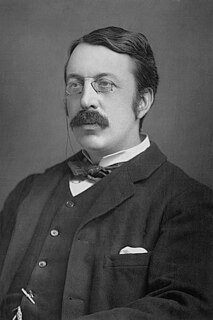
Three Latin Motets, Op. 38, is a collection of three sacred motets based on Latin texts for mixed unaccompanied choir by Charles Villiers Stanford, comprising Justorum animae, Coelos ascendit hodie and Beati quorum via. The texts come from different sources, and the scoring is for four to eight parts. They were published by Boosey & Co in 1905. The works, some of Stanford's few settings of church music in Latin, have remained in the choral repertoire internationally and are performed in liturgies and concert.
Symphony No. 1 in B-flat major was the first symphony composed by Charles Villiers Stanford an Irish composer, music teacher, and conductor. It was written in 1876 to compete for a prize offered by the proprietors of the Alexandra Palace. It came second out of 46 entries earning a prize of £5. The symphony was dedicated to the tenor Arthur Duke Coleridge who had been a friend of Stanford's at Cambridge. It was first played at The Crystal Palace in London in 1879 but was never published or performed again in Stanford's lifetime.

The Service in B-flat major, Op. 10, is a collection of Anglican church music by Charles Villiers Stanford for mixed choir and organ containing the canticles for each of the principal services of the Anglican Church. Stanford set the traditional liturgical texts in English in 1879 when he was the organist of Trinity College, Cambridge. They were published by Novello in 1902. Stanford orchestrated the work in 1903, with additional organ.

Charles Villiers Stanford's Violin Sonata No. 1 in D major, Op. 11, was composed in 1877, shortly after the composer completed his studies in Germany. It was one of his first pieces of chamber music, preceded only by his A major cello sonata. First performed the year it was composed, the sonata was published in 1878 by Ries & Erler in Germany, with a dedication to violinist Ludwig Straus.
Percy Turnbull was an English composer and pianist best known for his piano character pieces and songs.

The Blue Bird is a partsong composed by Charles Villiers Stanford in 1910. It is set to the words of L'Oiseau Bleu, a poem by Mary Elizabeth Coleridge, which depicts a bluebird in flight over a lake. It is written for soprano, divided altos, tenor and bass. "The Blue Bird" is the third of Stanford's Eight Part Songs which are all settings of texts by Coleridge. It was widely performed by choral societies in England during Stanford's life and is considered one of the best English partsongs ever written. It has been recorded by ensembles including The Cambridge Singers, Oxford Camerata, Tenebrae, and the Gabrieli Consort.












